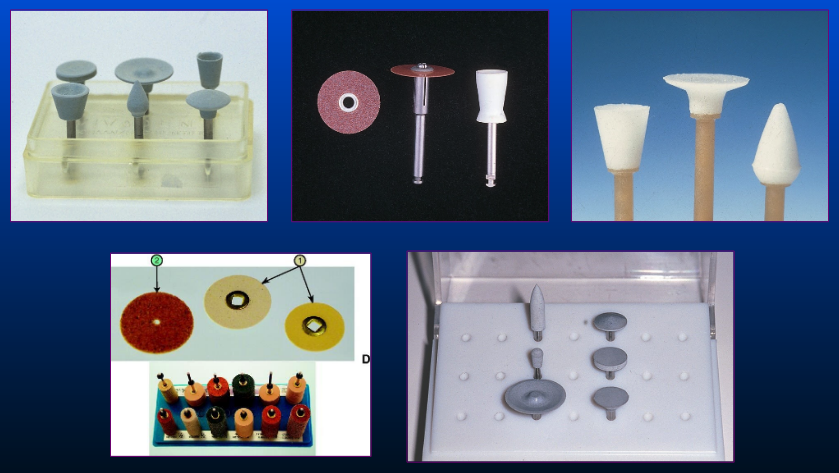DHA 102
Laser Handpiece
- Design
- Laser light beam, conducted through a fiberoptic cable, instead of rotary instruments
- Resemblance to a standard handpiece
- Water-coolant system
- Air-coolant system
- Uses
- Cauterizing soft tissue
- Vaporizing decayed tooth structure
- Advantages
- Usually painless
- Generally no need for anesthesia
- Speed of procedure
- Disadvantage
- Cannot be used on teeth with existing restorations
Designed to perform special functions without changes and without damage to the surrounding tissues or materials.
Caution must be used in handling the laser handpiece: Do not sharply bend the fiberoptic cord, do not touch the exposed fiberoptic cable, do not touch the end of the fiberoptic connector, and always keep the connecting parts clean.
Lasers are used in dentistry to remove decay from the tooth structure, to cure bonding materials, to whiten tooth teeth, and in periodontal treatment.
Very specific equipment and training are required for the incorporation of laser technology into the dental office.
Laboratory Handpiece
- Design
- Operates at speeds as high as 20,000 rpm
- Uses laboratory burs
- Greater torque than that of handpieces used intraorally
What is torque? (A twisting or turning force.)
Increased torque is better suited to the heavier pressure required during grinding and polishing procedures performed outside the mouth.
Handpiece Maintenance
- General considerations
- Wear personal protective equipment and follow universal precautions.
- Clean debris from the external surface.
- Clean the internal components of the handpiece.
- Handpiece must be dry before being packaged.
- Wrap the handpiece for sterilization.
- Sterilize the handpiece.
- Wipe the light port on the fiber-optic with an alcohol swab to remove any excess lubricant.
What are the main reasons a handpiece fails or breaks? (Improper cleaning and lubrication.)
Inadequate cleaning of the handpiece before sterilization can result in the collection of debris in the handpiece’s internal parts. Debris creates wear on the handpiece motor and inner movable parts.
Is it possible to lubricate a handpiece too much? (Yes. Too much lubrication can be as damaging as not enough lubrication.)
Rotary Cutting Instruments
- Three basic parts to a rotary instrument
- Shank: Portion that fits into the handpiece.
- Straight shank
- Latch type shank
- Friction grip shank
- Neck: Portion of the rotary instrument that connects the shank and the head.
- Head: The cutting, polishing, or finishing portion.
- Shank: Portion that fits into the handpiece.
Rotary cutting instruments are accessories intended for use with the dental handpiece.
There are hundreds of different types of rotary instruments available in dentistry, and each is designed for a different task or use.
It is important that the dental assistant know the dentist’s preferences.
Bur parts and types of shanks:
A, Long straight lab. B, Latch-type. C, Friction grip.
(From Robinson D, Bird D: Essentials of dental assisting, ed 3, Philadelphia, 2001, Saunders.)
Looking at the slide, what part makes up the largest section of the rotary instrument? (Shank.)
The shank length will vary according to the specific function of the bur and the handpiece to which it is attached.
Dental Burs
- Rotary instruments with sharp cutting head.
- Uses
- Tooth preparation.
- Excavation of decay.
- Finishing cavity walls.
- Finishing restoration surfaces.
- Taking out old fillings.
- Finishing crown preparations.
- Separating crowns and bridges.
- Adjusting and correcting acrylic temporaries.
A dental bur is classified as a “sharp.” Care must be taken when placing the bur on the handpiece and removing the bur after the procedure. Removal of a contaminated bur should be done while wearing heavy utility gloves.
Burs come in a variety of shapes. The shape is commonly referred to as the “contour” or “design.”
Burs are used to enter the tooth structure, remove decay, extend preparations, cut retention grooves, form internal walls of the prep, and provide angles to the wall prep.
Finishing rotary instruments
(Courtesy Miltex, Inc, York, Pennsylvania.)

Finishing rotary burs are similar in appearance to cutting burs except for one distinctive feature. What is that feature? (The number of blades or flutes is increased on the finishing bur.)
The greater the number of cutting surfaces, the greater polishing capability.
The slide pictures the three most common finishing burs: round, tapered and flame-shaped.
Abrasive materials for rotary instruments.
(D, From Boyd L: Dental Instruments: A Pocket Guide, ed 3, St. Louis, 2009, Saunders.)

Numerous abrasive materials are found on these instruments, from very coarse to fine.
Abrasive discs and wheels are attached to a mandrel (a metal shaft), which is then attached to the dental handpiece.
